For gardeners in colder regions, snow is both a blessing and a challenge. A light blanket of snow can act as natural insulation for plants and soil, but heavy snow loads can crush delicate structures, compact soil, and damage overwintering crops. With winter storms becoming more unpredictable, it’s important to know how to safeguard your garden beds from the weight and stress of heavy snow.
This guide explores practical, expert-recommended strategies to protect your raised beds, perennials, and overwintering vegetables when snow starts piling up.
Why Heavy Snow Can Be Harmful
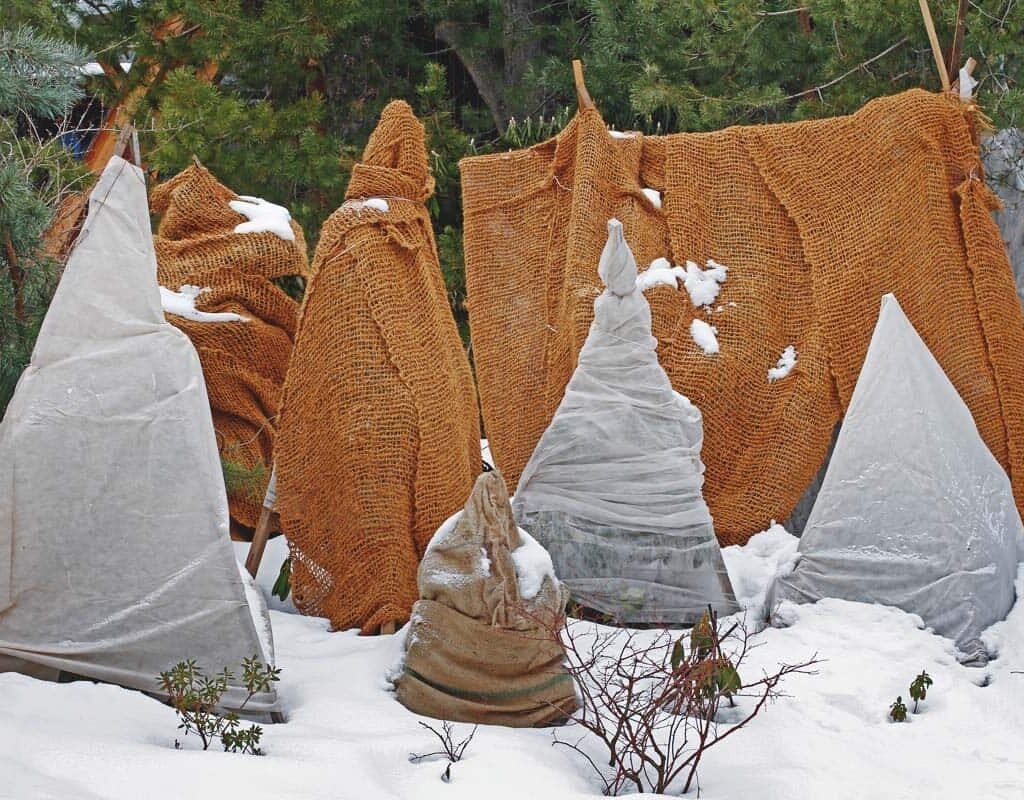
Snow itself isn’t inherently bad for gardens—in fact, a few inches can shield soil and roots from freezing winds. However, too much snow can cause problems:
- Compacted Soil: Repeated heavy snowfalls can press soil particles tightly together, reducing air pockets needed by roots and beneficial microbes.
- Crushed Plants: Perennials, shrubs, or overwintering vegetables may break or smother under snow’s weight.
- Damaged Structures: Raised beds, trellises, row covers, and hoops can collapse under accumulated snow.
- Delayed Spring Warm-Up: Thick snow layers insulate soil so well that it stays frozen longer, delaying spring planting.
The key is finding balance—using snow as insulation while preventing its excess weight from doing harm.
Step 1: Mulch to Insulate Soil
A layer of mulch helps stabilize soil temperatures and prevents frost heaving (when soil repeatedly freezes and thaws, pushing plants upward).
- Best mulches for snow-heavy areas: Straw, shredded leaves, pine needles, or compost.
- Application depth: Spread 3–4 inches over bare soil or around perennials, making sure not to suffocate plant crowns.
- Expert tip: Mulch before the first major snowfall so it’s in place to buffer plants.
Step 2: Protect Perennials with Covers
Delicate perennials and overwintering crops need added shielding against heavy snow pressure.
- Burlap Wraps: Wrapping shrubs and perennials in burlap helps them hold shape while shedding snow.
- Row Covers: Lightweight fabric stretched over hoops prevents snow from sitting directly on crops like spinach or kale.
- Evergreen Boughs: Laying pine or fir branches over beds adds insulation while allowing snow to filter through more gently.
Step 3: Strengthen Garden Structures
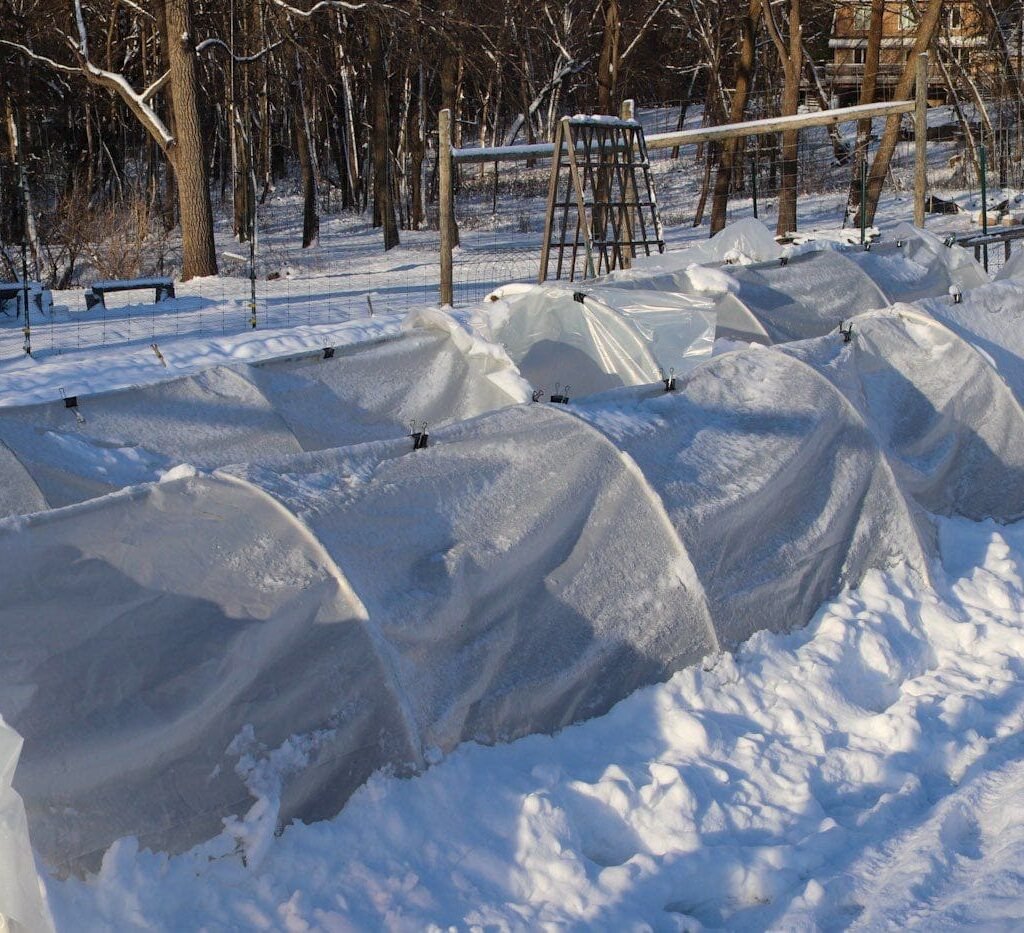
Snow load can quickly collapse flimsy supports. Preparing in advance keeps your garden protected.
- Hoop Houses & Tunnels: Use sturdy PVC or metal hoops spaced closely together to prevent sagging. Reinforce with a center ridge pole if possible.
- Cold Frames: Check that lids close tightly and frames are solid. Slanted tops shed snow more effectively than flat ones.
- Raised Beds: Inspect wooden frames for rot or loose screws—snow adds weight, and weak boards may bow or split.
Step 4: Manage Snow Buildup
Sometimes, snow removal is necessary to prevent damage.
- Shake Shrubs Gently: Use a broom to lightly tap branches, knocking off excess snow without breaking them.
- Clear Structures: After storms, brush snow off row covers, tunnels, and cold frames before it freezes solid.
- Leave Some Snow: A light layer over mulched soil provides beneficial insulation—avoid over-clearing.
Step 5: Prevent Ice Damage
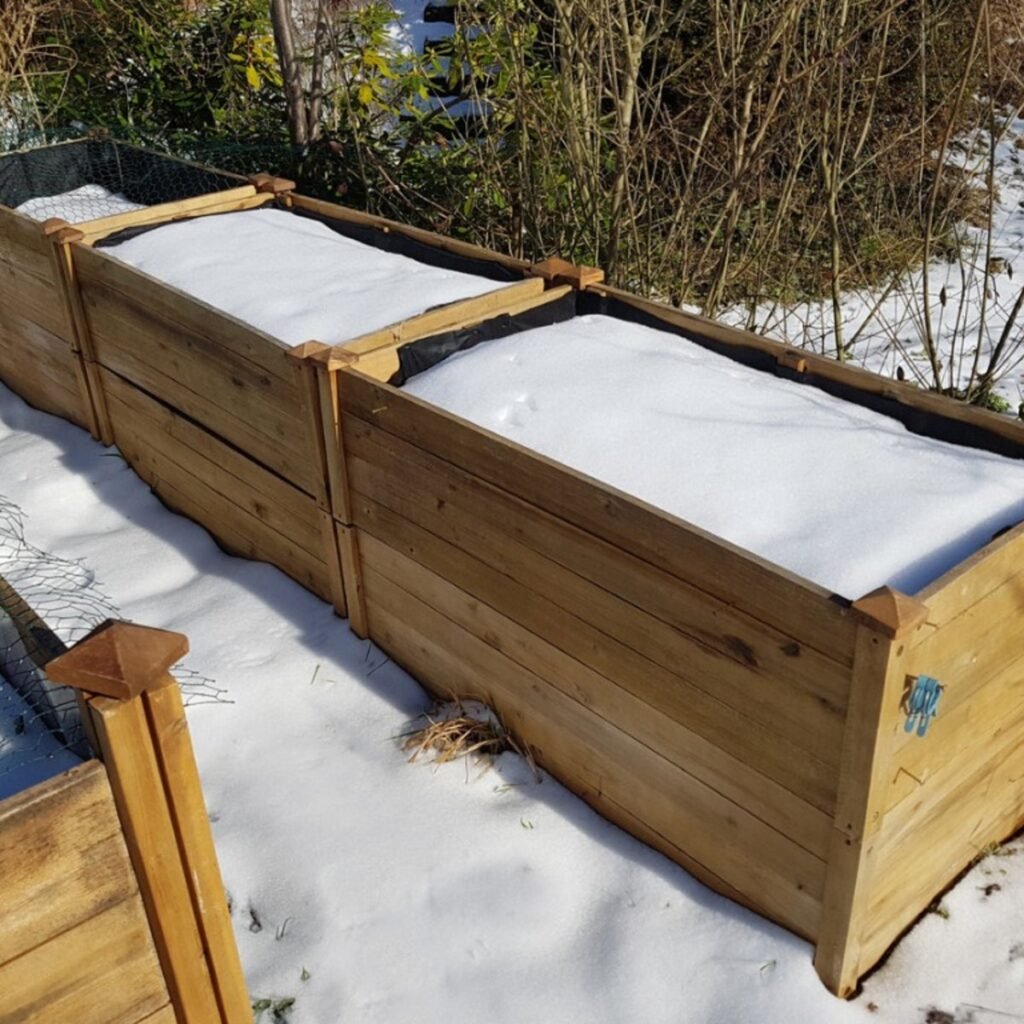
Heavy snow often leads to ice buildup, which is harder on plants and soil.
- Avoid Salt: Don’t use salt near beds, as it damages soil and roots. Instead, spread sand or gravel on walkways.
- Drainage Check: Ensure garden beds have good drainage so melting snow doesn’t create ice pools that suffocate roots.
- Sloped Covers: Row covers or cold frames with angled tops shed both snow and ice more effectively.
Step 6: Support Overwintering Crops
If you grow vegetables through winter, protecting them from heavy snow ensures extended harvests.
- Double Layer Protection: Combine low tunnels with row covers for insulation and snow resistance.
- Cold-Hardy Vegetables: Spinach, kale, and mache can survive under snow if shielded by mulch or row covers.
- Harvest Smart: Pick outer leaves before big storms to reduce stress on plants under snow weight.
Step 7: Prepare for Spring Recovery
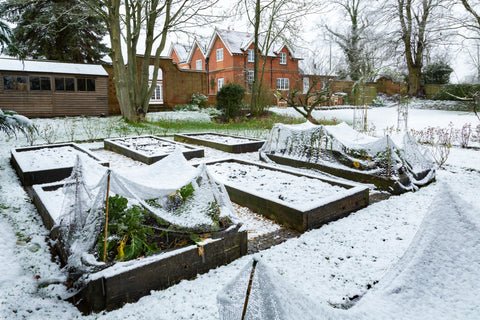
Despite best efforts, snow may still cause damage. Planning for recovery minimizes setbacks.
- Loosen Soil: If soil becomes compacted after winter, gently loosen it with a fork—avoid over-tilling.
- Replenish Mulch & Compost: Refresh nutrients lost over winter by adding compost or organic fertilizer.
- Prune Damaged Plants: Cut back broken branches or stems on perennials to encourage healthy regrowth.
Common Mistakes to Avoid
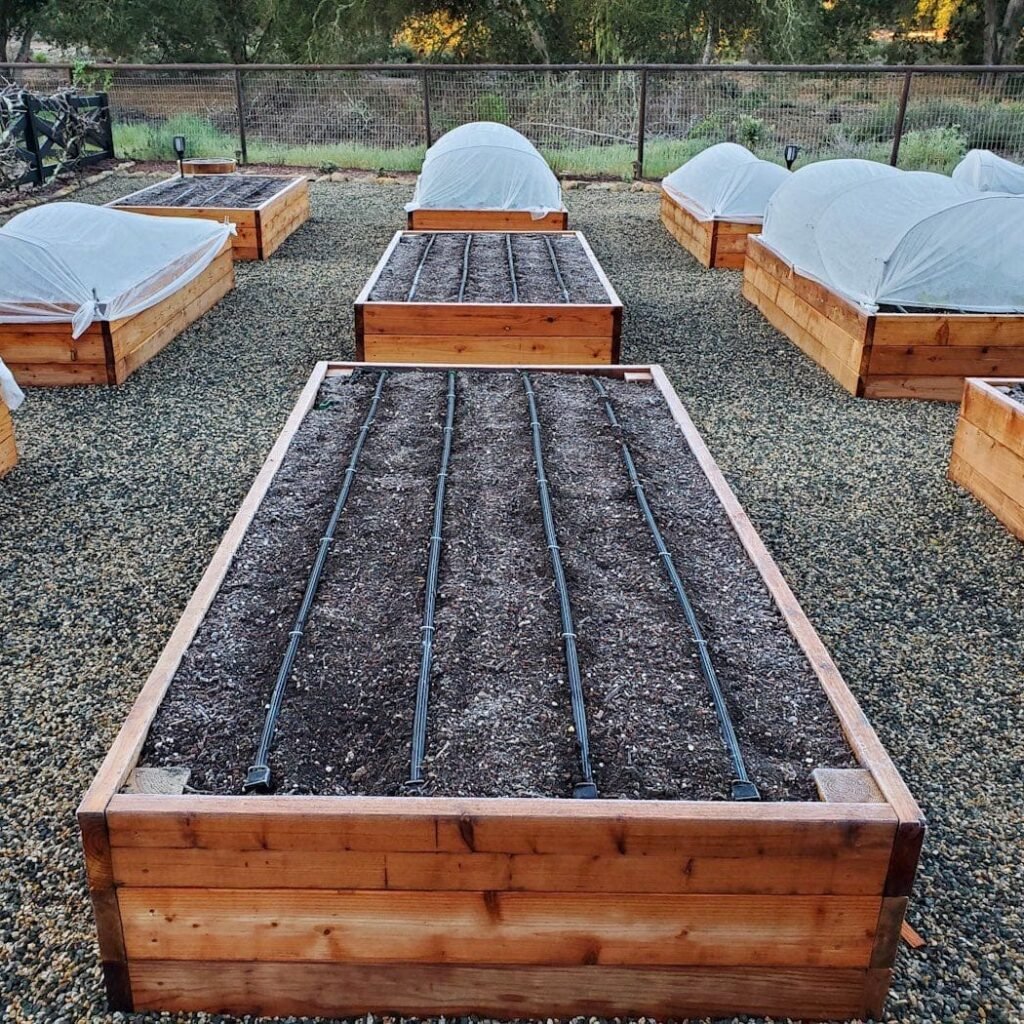
- Using Plastic Tarps Directly on Soil: They trap moisture, encouraging mold and rot.
- Over-Mulching: More than 6 inches of mulch can suffocate roots and delay spring warm-up.
- Waiting Too Long: Protective measures should be in place before the first heavy snowfall.
- Ignoring Drainage: Poor drainage under melting snow leads to root rot.
Final Thoughts
Heavy snow is inevitable in many climates, but it doesn’t have to ruin your garden beds. By combining mulch, strong structures, proper covers, and careful snow management, you can shield your soil and plants from winter’s harshest blows.
Think of snow protection as a long-term investment—every effort you make in fall and early winter safeguards your soil health, perennials, and crops for spring. With the right preparation, your garden won’t just survive under the snow; it will thrive when the thaw arrives.
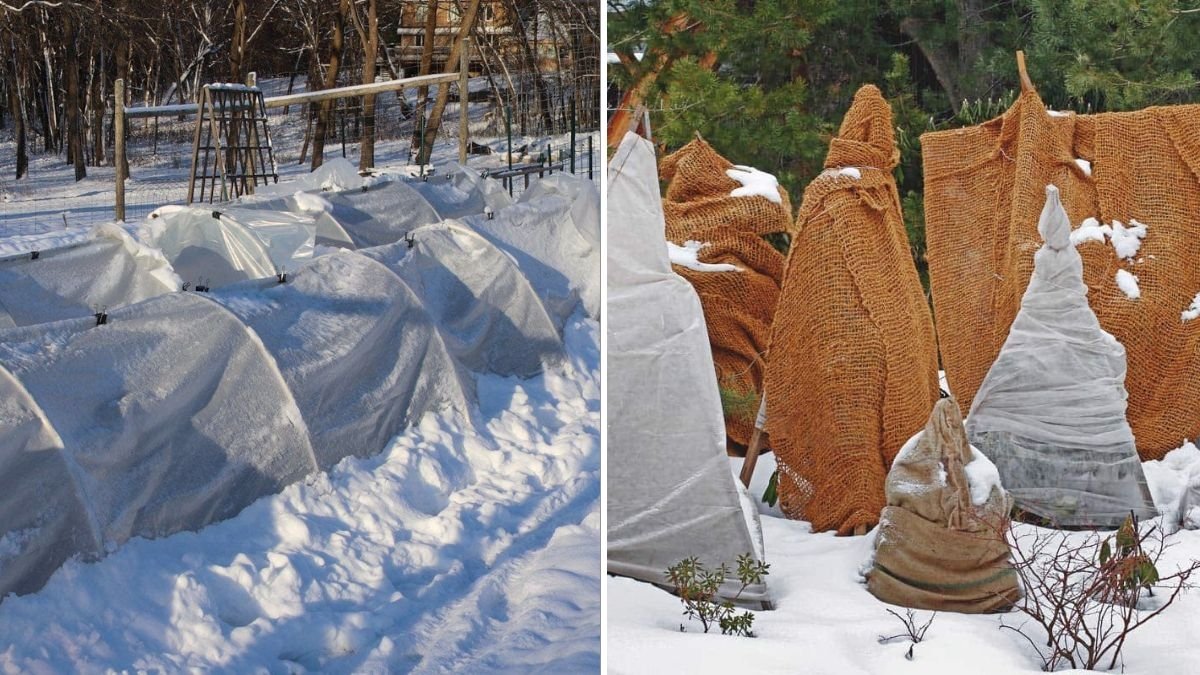
Leave A Comment